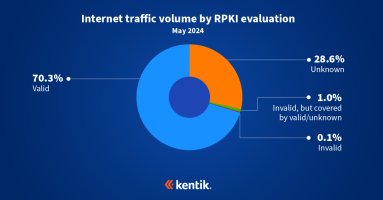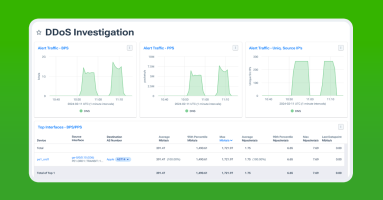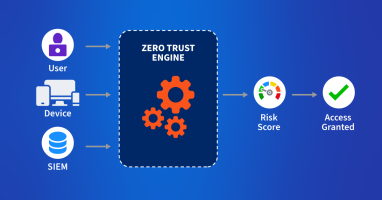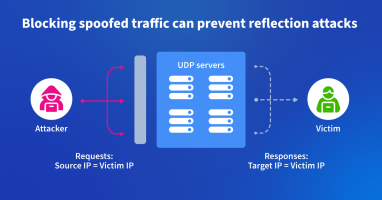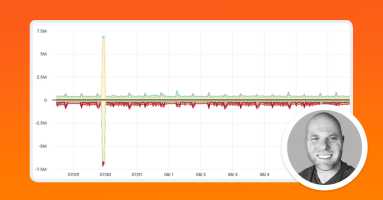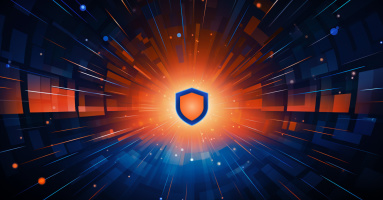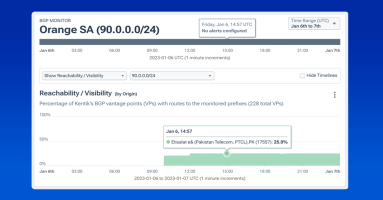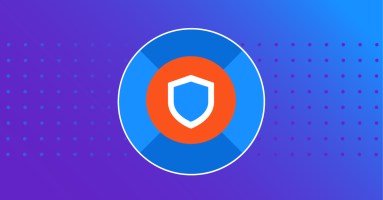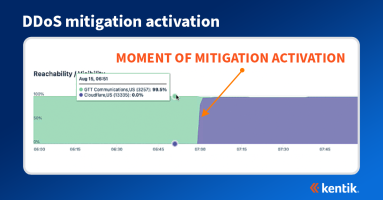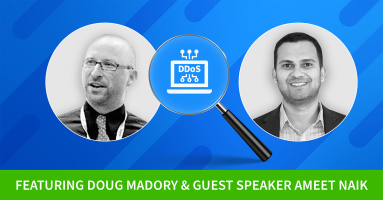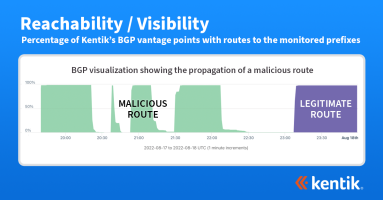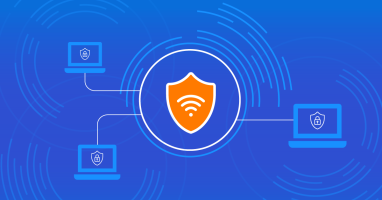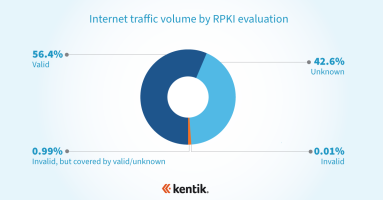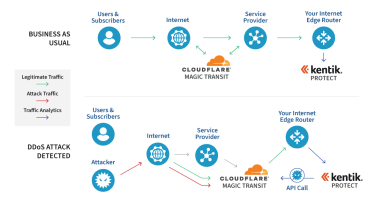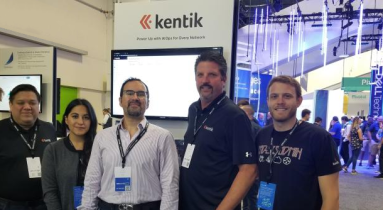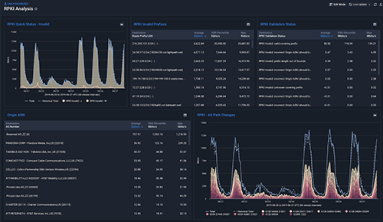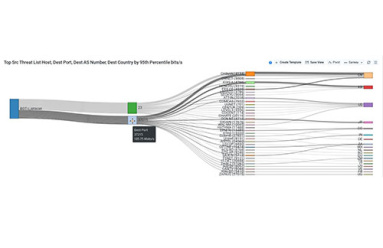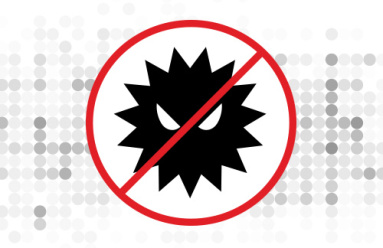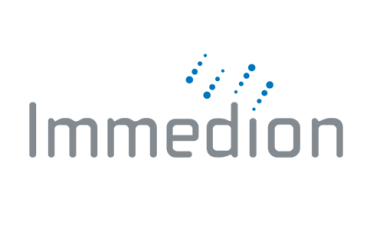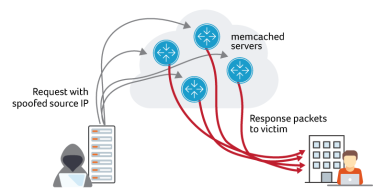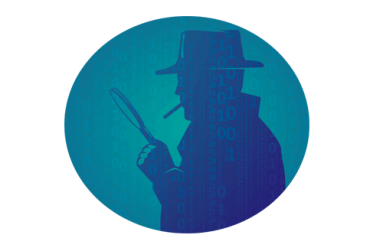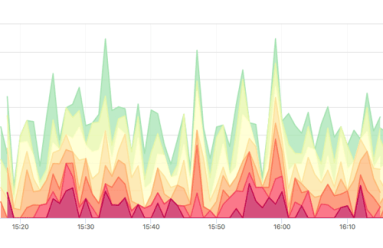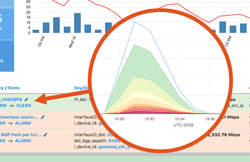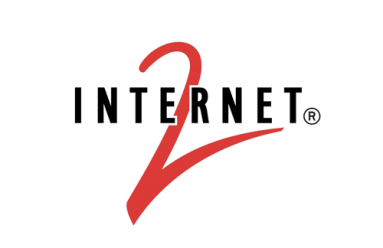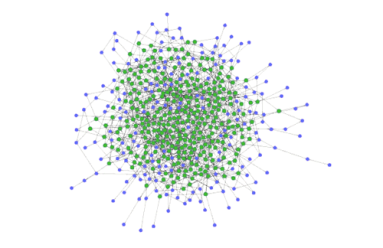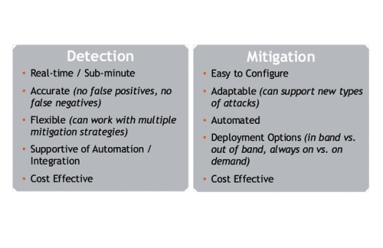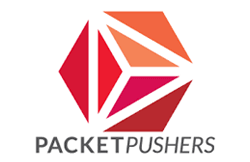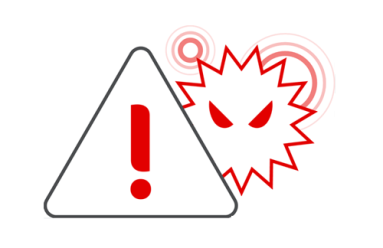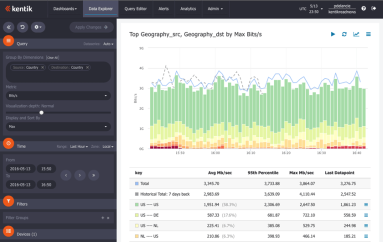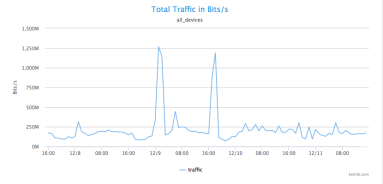Kentik Blog: Network Security
























The rise of autonomous AI attacks operating at machine speed demands that network security evolve beyond human capacity and manual processes. Kentik AI Advisor counters this threat by using AI for good, reasoning across full network context to proactively eliminate vulnerabilities and guide immediate, confident defense.
BGP Flowspec is one of the critical technologies gaining traction in DDoS mitigation strategies. In this article, Justin Ryburn outlines the adoption rates and best practices of this emerging and effective DDoS mitigation tool.
In this blog post, BGP experts Doug Madory of Kentik and Job Snijders of Fastly review the latest RPKI ROV deployment metrics in light of a major milestone.
DDoS attacks disrupt services and damage reputations, with motivations ranging from political to personal. These attacks can also mask more severe security breaches, so early detection and mitigation are crucial. Learn how Kentik provides a solution by analyzing enriched NetFlow data to identify and mitigate DDoS threats.
Zero trust in the cloud is no longer a luxury in the modern digital age but an absolute necessity. Learn how Kentik secures cloud workloads with actionable views of inbound, outbound, and denied traffic.
Managing modern networks means taking on the complexity of downtime, config errors, and vulnerabilities that hackers can exploit. Learn how BGP Flow Specification (Flowspec) can help to mitigate DDoS attacks through disseminating traffic flow specification rules throughout a network.
In this blog post, we describe how one backbone service provider uses Kentik to identify and root out spoofed traffic used to launch DDoS attacks. It’s a “moral responsibility,” says their chief architect.
In this post, Phil Gervasi uses the power of Kentik’s data-driven network observability platform to visualize network traffic moving globally among public cloud providers and then perform a forensic analysis after a major security incident.
No matter how much prevention you have, serious security incidents will inevitably occur. Read the next article in our security series that covers how to understand cyberattacks as quickly as possible so that your organization can respond swiftly.
Organizations are under constant attack, and it’s critical to reduce the time it takes to detect attacks to minimize their cost. This first article in our new security series dives deep into how Kentik helps customers before, during, and after a cyberattack.
In this blog post, BGP experts Doug Madory of Kentik and Job Snijders of Fastly update their RPKI ROV analysis from last year while discussing its impact on internet routing security.
We access most of the applications we use today over the internet, which means securing global routing matters to all of us. Surprisingly, the most common method is through trust relationships. MANRS, or the Mutually Agreed Norms for Routing Security, is an initiative to secure internet routing through a community of network practitioners to facilitate open communication, accountability, and the sharing of information.
Didn’t have time to watch our two recent webinars on the top trends network operators need to know about to be successful in 2023? We’ve got you covered. Let’s look at the biggest takeaways and break down some key concepts.
A data-driven approach to cybersecurity provides the situational awareness to see what’s happening with our infrastructure, but this approach also requires people to interact with the data. That’s how we bring meaning to the data and make those decisions that, as yet, computers can’t make for us. In this post, Phil Gervasi unpacks what it means to have a data-driven approach to cybersecurity.
As networks become distributed and virtualized, the points at which they can be made vulnerable, or their threat surface, expands dramatically. Learn best practices for preventing, detecting, and mitigating the impact of cyberthreats.
At first glance, a DDoS attack may seem less sophisticated than other types of network attacks, but its effects can be devastating. Visibility into the attack and mitigation is therefore critical for any organization with a public internet presence. Learn how to use Kentik to see the propagation of BGP announcements on the public internet before, during, and after the DDoS attack mitigation.
Didn’t have time to watch our NetOps guide to DDoS defense webinar with Cloudflare? This blog recaps what was presented and discussed.
On August 17, 2022, an attacker was able to steal $235,000 in cryptocurrency by employing a BGP hijack against Celer Bridge, a cryptocurrency service. While this incident is the latest such attack, there are lessons beyond the world of cryptocurrency for any organization that conducts business on the internet.
Learn eight ways that network monitoring can be critical for DDoS detection and mitigation.
RPKI is the internet’s best defense against BGP hijacks. What is it? And how does it protect the majority of your outbound traffic from accidental BGP hijacks without posing a risk to legitimate traffic?
Kentik and Cloudflare have a new integration. Read why and how we’ve expanded our partnership for on-demand DDoS protection.
Kentik’s Jim Meehan and Crystal Li share their insights from VMworld 2019, with a focus on news from the worlds of networking, multi-cloud, Kubernetes and security.
Kentik’s Greg Villain and Jason Philippon explain the basics of using Resource Public Key Infrastructure (RPKI) to protect against BGP prefix hijack attacks and stop them from propagating across the internet.
Crystal Li’s new Technical Guide walks you through new Kentik features for supporting Resource Public Key Infrastructure (RPKI), explaining Kentik’s new RPKI Validation Status and RPKI Quick Status dimensions.
Customer success engineer Dan Kelly explains how Race Communications used Kentik’s powerful network analytics to identify malicious traffic associated with the Mirai botnet, determine which of Race Communications’ customer IP addresses were being exploited, save its online IP reputation and fend off other types of DDoS and botnet attacks.
Today almost every type of organization must be prepared to mitigate DDoS attacks and proactively defend their networks. In this post, we discuss our newly added BGP Flowspec support in Kentik Detect. This enables our customers to have the granularity needed to detect attack traffic in real time and mitigate attacks faster.
Broadband providers must manage high infrastructure costs on a price-per-bit basis. Visibility into their network performance and security is critical. In this post, we dig into how that led Viasat, a global provider of high-speed satellite broadband services and secure networking systems, to tap Kentik for help.
With increased reliance on cloud and data centers, providers are under more pressure to maintain real-time network visibility to reduce potential threats to their service offerings. That’s why provider Immedion chose Kentik. Read the case study.
Kentik’s VP of Channels Jim Frey takes a look back at RSA 2018. After walking the show floor, in this post he highlights how the event has grown over the years as the security vendor landscape has gotten more complex and bloated. He also explains why good technology alone is not the answer.
Network performance and network security are increasingly becoming two sides of the same coin. Consequently, enterprise network operations teams are stepping up collaboration with their counterparts in the security group. In this post, EMA analyst Shamus McGillicuddy outlines these efforts based on his latest research.
Modern enterprise networks are becoming more dynamic and complex, which poses significant challenges for today’s IT leaders. In this post, data center and IT service provider phoenixNAP discusses how Kentik Detect helps overcome network visibility challenges.
News broke last week that attackers attempted to steal cryptocurrencies from users of MyEtherWallet.com by using a BGP route hijack attack. Numerous Kentik Detect customers saw changes in their traffic patterns, allowing them to detect this attack. In this post, we look at how the attack worked and the visibility that Kentik Detect provided our customers.
The Internet is the wild wild west — and the pace of DDoS attacks is not letting up. But thanks to recent advances in streaming telemetry, network visibility, and Big Data, the good guys are armed with the weapons they need to maintain the peace.
Attackers are using memcached to launch DDoS attacks. Multiple Kentik customers have reported experiencing the attack activity. It started over the weekend, with several external sources and mailing lists reporting increased spikes on Tuesday. In this blog post, we look at what our platform reveals about these attacks.
IoT represents a massive threat to network infrastructure, as seen in widely publicized IoT-based DDoS attacks like Mirai. So what needs to happen to safeguard our devices and networks from participating in these botnet attacks? And how can IoT device originated attacks get quickly identified and stopped by network operators? In this post, we discuss scalable IoT DDoS protection.
Domain Name Server (DNS) is often overlooked, but it’s one of the most critical pieces of Internet infrastructure. As driven home by last October’s crippling DDoS attack against Dyn, the web can’t function unless DNS resolves hostnames to their underlying IP addresses. In this post we look at how combining Kentik’s software host agent with Dashboards in Kentik gives you the tools you need to ensure DNS availability and performance.
Operating a network means staying on top of constant changes in traffic patterns. With legacy network monitoring tools, you often can’t see these changes as they happen. Instead you need a comprehensive visibility solution that includes real-time anomaly detection. Kentik Detect fits the bill with a policy-based alerting system that continuously evaluates incoming flow data. This post provides an overview of system features and configuration.
Today’s increased reliance on cloud and distributed application architectures means that denial of just a single critical dependency can shut down Web availability and revenue. In this post we look at what that means for large, complex enterprises. Do legacy tools protect sufficiently against new and different vulnerabilities? If not, what constitutes a modern approach to DDoS protection, and why is it so crucial to business resilience?
DDoS attacks constitute a very significant and growing portion of the overall cybersecurity threat. In this post we recap highlights of a recent Webinar jointly presented by Kentik’s VP of Product Marketing, Alex Henthorn-Iwane, and Forrester Senior Analyst Joseph Blankenship. The Webinar focused on three areas: attack trends, the state of defense techniques, and key recommendations that organizations can implement to improve their protective posture.
Avi Freedman recently spoke with Ethan Banks and Greg Ferro of PacketPushers about Kentik’s latest updates, which focus primarily on features that enhance network performance monitoring and DDoS protection. This post includes excerpts from that conversation as well as a link to the full podcast. Avi discusses his vision of appliance-free network monitoring, explains how host monitoring expands Kentik’s functionality, and gives an overview of how we detect and respond to anomalies and attacks.
Destination-based Remotely Triggered Black-Hole routing (RTBH) is an incredibly effective and very cost-effective method of protecting your network during a DDoS attack. And with Kentik’s advanced Alerting system, automated RTBH is also relatively simple to configure. In this post, Kentik Customer Success Engineer Dan Rohan guides us through the process step by step.
As organizations increasingly rely on digital operations there’s no end in sight to the DDoS epidemic. That aggravates the headaches for service providers, who stand between attackers and their targets, but it also creates the opportunity to offer effective protection services. Done right, these services can deepen customer relationships while expanding revenue and profits. But to succeed, providers will need to embrace big data as a key element of DDoS protection.
The source of DDoS attacks is typically depicted as a hoodie-wearing amateur. But the more serious threat is actually a well-developed marketplace for exploits, with vendors whose state-of-the-art technology can easily overwhelm legacy detection systems. In this post we look why you need the firepower of big data to fend off this new breed of commercial attackers.
Whether its 70s variety shows or today’s DDoS attacks, high-profile success begets replication. So the recent attack on Dyn by Mirai-marshalled IoT botnets won’t be the last severe disruption of Internet access and commerce. Until infrastructure stakeholders come together around meaningful, enforceable standards for network protection, the security and prosperity of our connected world remains at risk.
DDoS attacks pose a serious and growing threat, but traditional DDoS protection tools demand a plus-size capital budget. So many operators rely instead on manually-triggered RTBH, which is stressful, time-consuming, and error-prone. The solution is Kentik’s automated RTBH triggering, based on the industry’s most accurate DDoS detection, that sets up in under an hour with no hardware or software install.
Can legacy DDoS detection keep up with today’s attacks, or do inherent constraints limit network protection? In this post Jim Frey, Kentik VP Strategic Alliances, looks at how the limits of appliance-based detection systems contribute to inaccuracy — both false negatives and false positives — while the distributed big data architecture of Kentik Detect significantly enhances DDoS defense.
In our second post related to BrightTalk videos recorded with Kentik at Cisco Live 2016, Kentik CEO Avi Freedman talks about the increasing threats that digital businesses face from DDoS and other forms of attacks and service interruptions. Avi also discusses the attributes that are required or desirable in a network visibility solution in order to effectively protect a network.
Network security depends on comprehensive, timely understanding of what’s happening on your network. As explained by information security executive and analyst David Monahan, among the key value-adds of Kentik Detect are the ways in which it enables network data to be applied — without add-ons or additional charges — to identify and resolve security issues. Monahan provides two use cases that illustrate how the ability to filter out and/or drill-down on dimensions such as GeoIP and protocol can tip you off to security threats.
This guest post brings a security perspective to bear on network visibility and analysis. Information security executive and analyst David Monahan underscores the importance of being able to collect and contextualize information in order to protect the network from malicious activity. Monahan explores the capabilities needed to support numerous network and security operations use cases, and describes Kentik Detect as a next-generation flow analytics solution with high performance, scalability, and flexibility.
With massive data capacity and analytical flexibility, Kentik Detect makes it easy to actively explore network traffic. In this post we look at how to use this capability to rapidly discover and analyze interesting and potentially important DDoS and other attack vectors. We start with filtering by source geo, then zoom in on a time-span with anomalous traffic. By looking at unique source IPs and grouping traffic by destination IP we find both the source and the target of an attack.
If your network visibility tool lets you query only those flow details that you’ve specified in advance then you’re likely vulnerable to threats that you haven’t anticipated. In this post we’ll explore how SQL querying of Kentik Detect’s unified, full-resolution datastore enables you to drill into traffic anomalies, to identify threats, and to define alerts that notify you when similar issues recur.
DDoS attacks impact profits by interrupting revenue and undermining customer satisfaction. To minimize damage, operators must be able to rapidly determine if a traffic spike is a true attack and then to quickly gather the key information required for mitigation. Kentik Detect’s Data Explorer is ideal for precisely that sort of drill-down.


